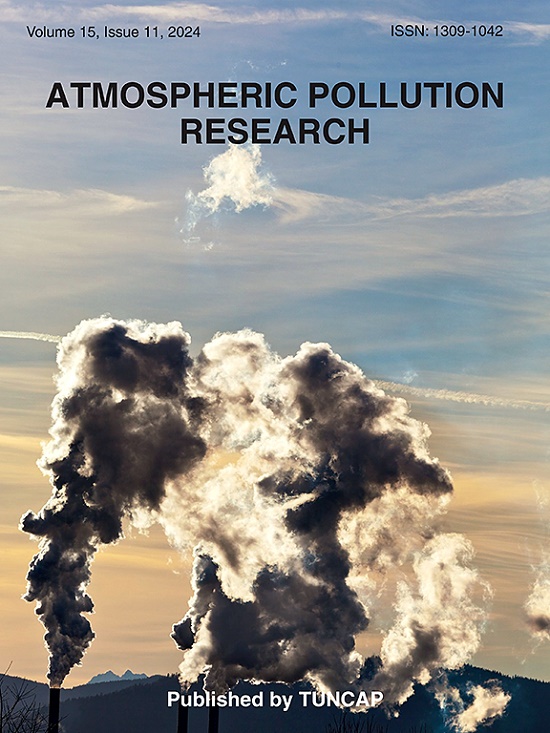Natural discharge of carbon from the extremely arid land: The mode and amount of CO2 emission based on earth-air exchange
IF 3.9
3区 环境科学与生态学
Q2 ENVIRONMENTAL SCIENCES
引用次数: 0
Abstract
Carbon dioxide (CO2) emission is a critical cause of global warming. At present, the quantity of CO2 emitted by land is mainly assessed in terms of concurrent soil respiration. It is unclear whether there are any background terrestrial sources of CO2. According to the closed system model, earth-air (the air in the vadose zone) and atmospheric air are widely exchanged at the land's surface due to the barometric pumping effect. In order to calculate the amount of CO2 released from the extremely arid region, an inventive device was utilized to monitor the amount of earth-air and CO2 flowing. The findings demonstrate that the concentration of CO2 in the earth-air rises when atmospheric pressure falls and it is proportionate to the earth-air flow. The CO2 emitted from the land is positively correlated with temperature, amplitude of atmospheric fluctuations, and thickness and porosity of the vadose zone. CO2 continuously migrates upwards driven by barometric pumping. Emission of CO2 from land is widespread due to earth-air exchange. The total CO2 emission varies with the season, exhibiting a ‘γ-shaped’ profile over the course of a year. On a daily timescale, the CO2 flow varies in a bimodal manner. The average yearly CO2 concentration in the pipe outflowing earth-air is 789.2 ppm; that of the inflowing air is 594.5 ppm. This study provides a method for monitoring terrestrial CO2 release. Determining the amount CO2 emitted via the earth-air mechanism has great significance for the scientific evaluation of soil respiration, natural CO2 emission effects on ambient.

求助全文
约1分钟内获得全文
求助全文
来源期刊

Atmospheric Pollution Research
ENVIRONMENTAL SCIENCES-
CiteScore
8.30
自引率
6.70%
发文量
256
审稿时长
36 days
期刊介绍:
Atmospheric Pollution Research (APR) is an international journal designed for the publication of articles on air pollution. Papers should present novel experimental results, theory and modeling of air pollution on local, regional, or global scales. Areas covered are research on inorganic, organic, and persistent organic air pollutants, air quality monitoring, air quality management, atmospheric dispersion and transport, air-surface (soil, water, and vegetation) exchange of pollutants, dry and wet deposition, indoor air quality, exposure assessment, health effects, satellite measurements, natural emissions, atmospheric chemistry, greenhouse gases, and effects on climate change.
 求助内容:
求助内容: 应助结果提醒方式:
应助结果提醒方式:


